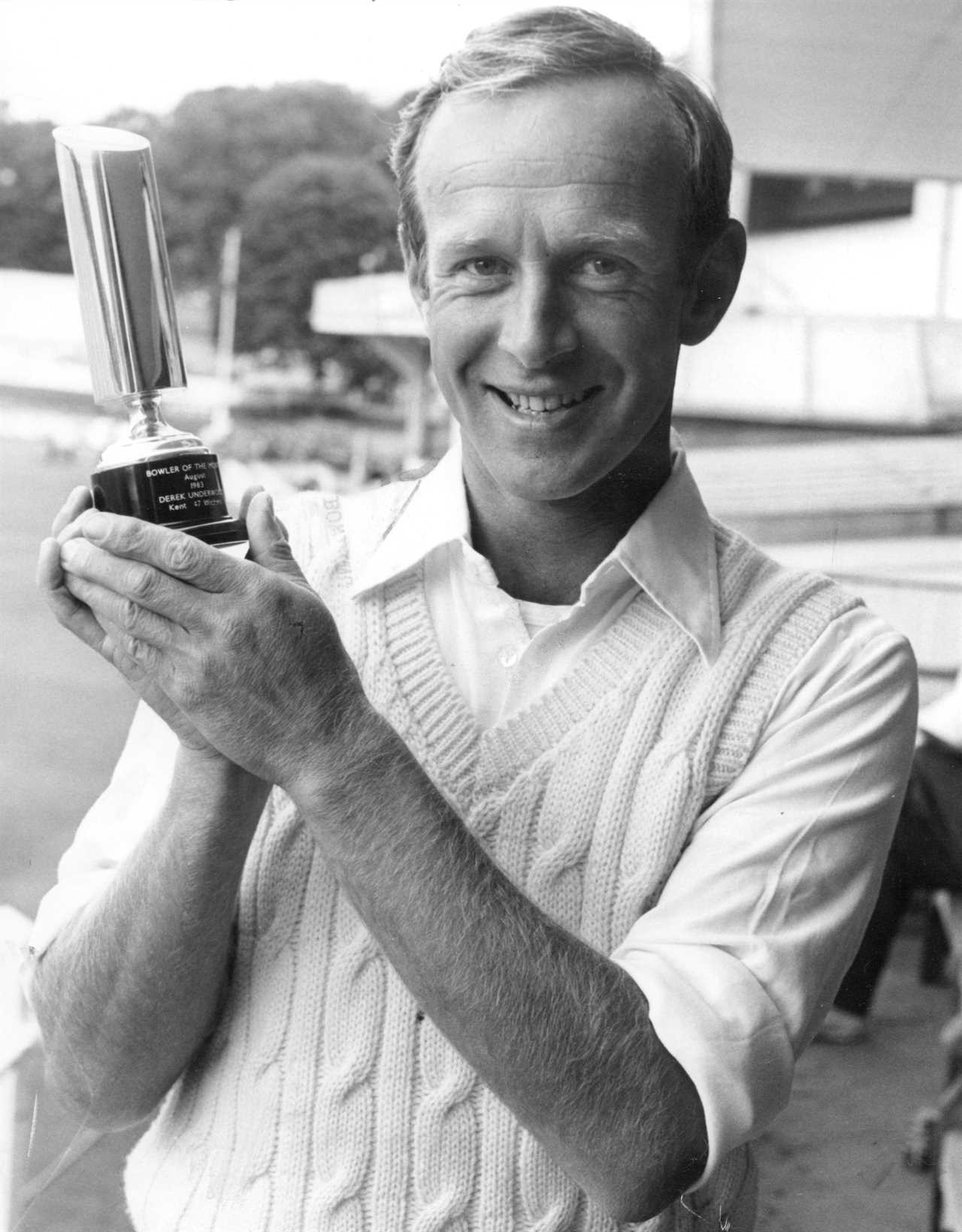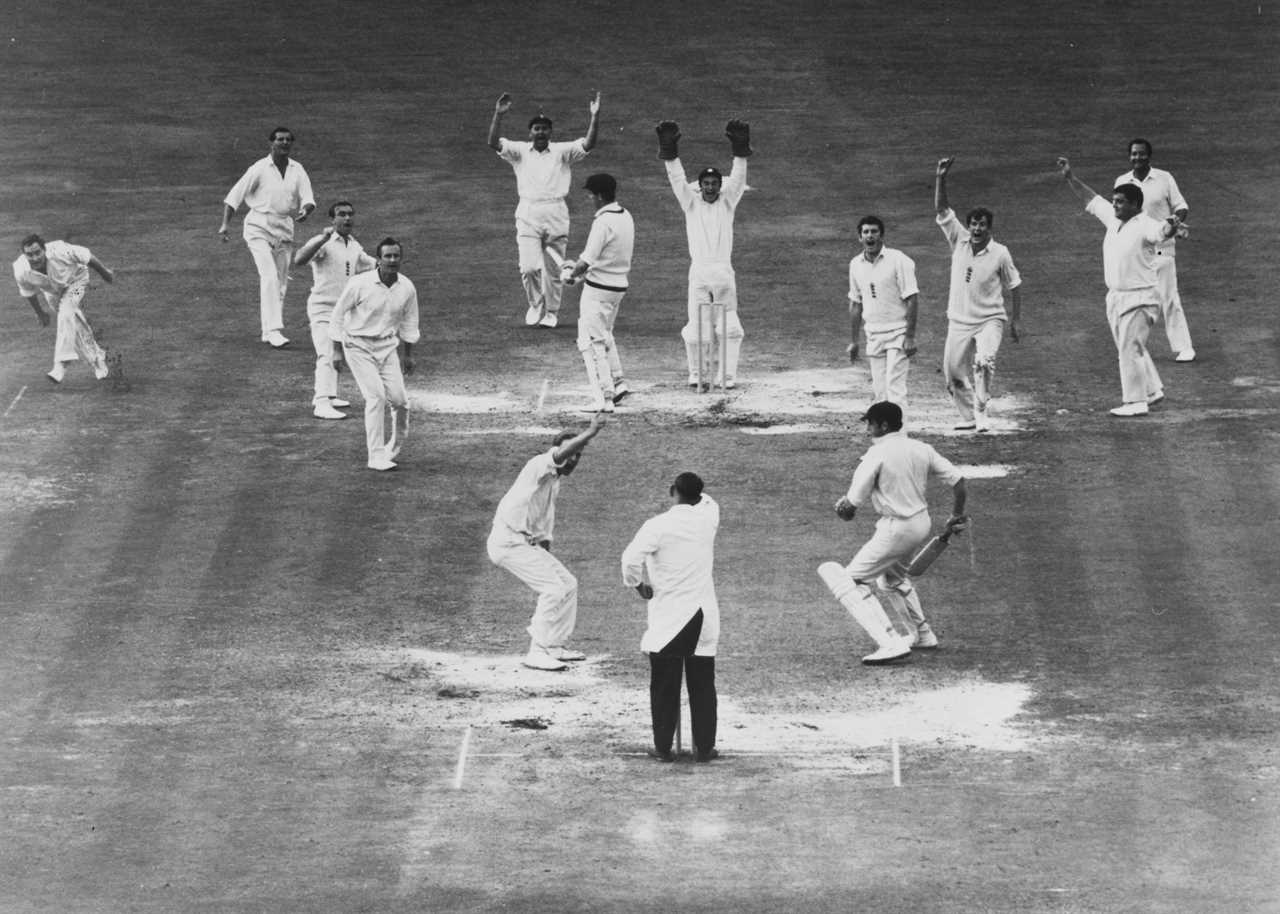DEREK UNDERWOOD, England’s most successful spin bowler of all time, has died aged 78.
Underwood was a unique bowler, operating at close to medium-pace and applying nagging accuracy and a hatred of conceding runs.

Legendary spinner Derek Underwood passed away on Monday

Underwood famously took the last wicket in the Fifth Test of the 1968 Ashes at the Oval
But it was on helpful pitches where left-armer Underwood became almost unplayable.
Surfaces were uncovered in the first half of his career and, after it rained, he extracted turn and lift and at a speed which prevented batsmen from reacting quickly enough or using their feet.
His nickname told the story. Underwood was known throughout cricket as ‘Deadly.’
Underwood was the central figure in one of sport’s most famous pictures.
On the final day of the Fifth Test against Australia at the Oval in 1968, a storm at lunch flooded the ground.
Play was able to resume only after a huge clean-up operation in which dozens of spectators helped.
Could England take the final five Aussie wickets in 75 minutes?
They could – with six minutes remaining when John Inverarity was lbw to Underwood. All eleven England players were in the frame.

Underwood bowled John Inverarity with six minutes of play remaining to clinch a series draw for England
Underwood finished with 7-50 and England squared the Ashes series.
He went on to take 297 Test wickets – 42 ahead of England’s next spinner, Graeme Swann – and would have harvested close to 400 if he hadn’t joined the Kerry Packer-financed World Series Cricket in 1977 and later a rebel tour of South Africa.
Many of his victims were catches or stumpings by his England and Kent team-mate Alan Knott, a genius of a wicketkeeper.
In the Ashes Test at Headingley in 1972, a fungus called fusarium affected the grass and Underwood took 10-82 in the match.
When the covers leaked at Lord’s in 1974, ‘Deadly’ routed Pakistan with 13-71.
Yes, with conditions in his favour, few batters survived for long.
Underwood, who had been suffering from dementia for a number of years, was a teenage prodigy who passed 100 wickets in his debut season which included his 18th birthday.
His first-class career tally was a monumental 2,465 wickets at 20 apiece.
He wasn’t a natural athlete with his feet at ‘ten to two’ and his love of a ciggie.
He was a quiet, calm, almost shy man, but forensically brilliant at spotting opponents’ weaknesses and exploiting them with a cricket ball.
Underwood served in 2008 as MCC president, one of the most prestigious offices in cricket and nominated by his predecessor Mike Brearley, the former England captain.
Kent chair Simon Phillip said: “Watching Derek weave his unique magic on a wet wicket was a privilege for all who were able to witness it. His induction into the ICC Hall of Fame shows the esteem in which he was held in world cricket.”
ECB chair Richard Thompson added: “To this day, there will still be the odd mention of Derek Underwood when conditions, especially in club cricket, become damp and perhaps suited to some accurate and pacey spin.
“There is no greater legacy than remaining part of the game long after you’ve finished playing.”
 Cricket NewsTips and TricksPrivacy PolicyTerms And Conditions
Cricket NewsTips and TricksPrivacy PolicyTerms And Conditions
